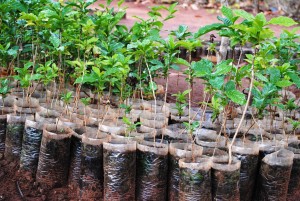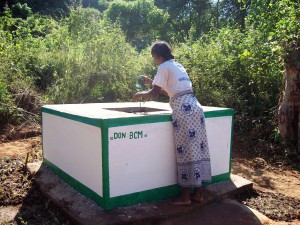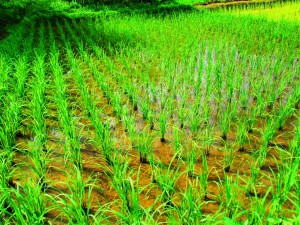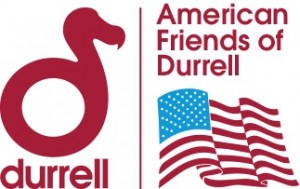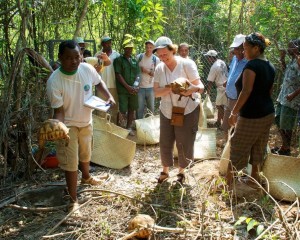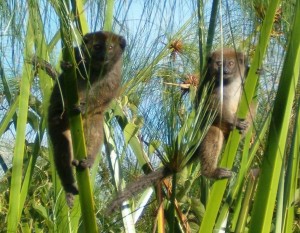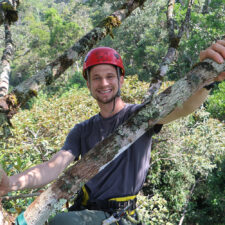The Zazamalala Foundation protects the dry deciduous forest of western Madagascar through reforestation, community development, captive breeding, and forest monitoring.
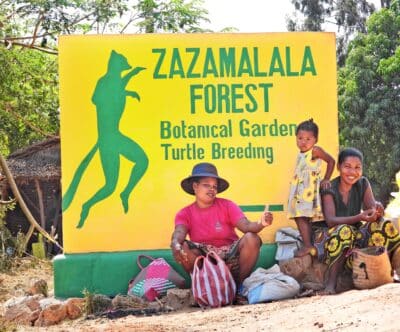
Sign for the Zazamalala Forest along the Route Nationale 35. Photo: Zazamalala Foundation.
What We Do
The Zazamalala forest was established in 2000 when blind Simon Rietveld returned after 30 years to the Morondava area in West Madagascar. He was shocked that most of the dry forest had been cleared. So, Simon and a team of international volunteers, together with paid local people, planted thousands of seedlings of rare species that once lived in the area. Gradually, the Zazamalala forest started to flourish.
Just 30 minutes by car from the Morondova airport, Zazamalala is an oasis of wilderness alongside small villages and rice fields. It provides the habitat for many animals, including lemurs, fossa, bush pigs, mongoose, snakes, and chameleons, and a huge variety of plants. At the Zazamalala botanical garden, we collect thousands of seeds and use them for reforestation. Zazamalala also houses a tortoise and turtle breeding centre.
What Lemur Species We Protect
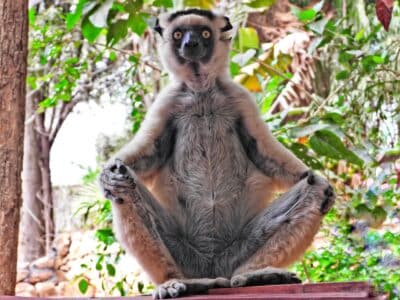
Verreaux’s sifaka. Photo: Zazamalala Foundation.
The following lemur species can be found at Zazamalala.
- Verreaux’s sifaka (Propithecus verreauxi)
- Greater bamboo lemur (Prolemur simus)
- Ring-tailed lemur (Lemur catta)
- Red-fronted brown lemur (Eulemur rufifrons)
- White-fronted brown lemur (Eulemur albifrons)
- Fat-tailed dwarf lemur (Cheirogaleus medius)
- Madame Berthe’s mouse lemur (Microcebus berthae)
- Grey mouse lemur (Microcebus murinus)
- Coquerel’s giant mouse lemur (Mirza coquereli)
- Western fork-Marked dwarf lemur (Phaner pallescens)
- Red-tailed sportive lemur (Lepilemur ruficaudatus)
How We Protect Lemurs and Other Wildlife
Reforestation
We are working to reforest a 30 km long and 1 to 3 hectares wide green corridor that will combine two isolated nature reserves: Mena Be and Zazamalala nature reserves. This corridor will allow animals to mingle, which is essential for genetic diversity. Thanks to our donors, Zazamalala forest was substantially enlarged between 2019-2021. We continually reforest and add more hectares of land, making more habitat for animals on the edge of extinction.
Turtle Breeding Program
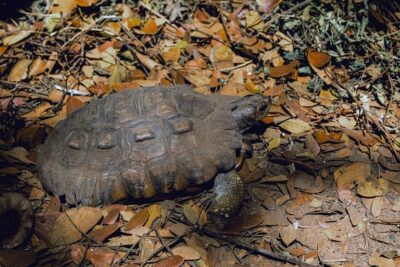
The critically endangered Flat-tail Tortoise. Photo: Zazamalala Foundation.
In the Zazamalala botanical garden, we breed two critically endangered turtles.
The critically endangered Flat-tail Tortoise (Pyxis planicauda) lives in a small part of the dry deciduous forest of west Madagascar. The last remaining males and females rarely meet and when they do, the female produces only a single egg per year. In the Zazamalala botanical garden, we keep many males and females together to maximize encounters and release the young after two years.
The critically endangered Madagascar Big-headed Turtle (Erymnochelys madagascariensis) lived for millions of years in the rivers and lakes of west Madagascar. At Zazamalala we breed them in large semi-natural containers, and release the young after one year.
In 2020, 43 critically endangered newborn Big-head turtles and Flat-tail tortoises were released in the forest and its ponds.
How We Support Local Communities
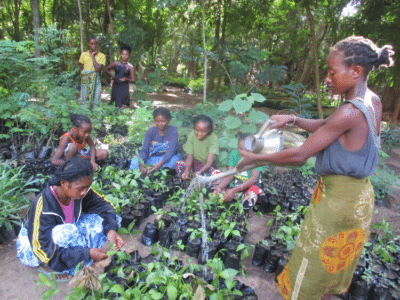
The Zazamalala concept for nature protection and reforestation encompasses a wholistic approach, including protection of animals and plants, and involving the local people. Photo: Zazamalala Foundation.
Apart of reforestation and breeding of endangered animals, community development is a prime issue. This means giving as many local people as possible paid work in the forest so they can be economically independent.
Education
In the villages around Zazamalala, education is limited and people have no electricity, bicycles, or books. We support education by repairing schools and constructing latrines and school desks. We also organize activities to help people learn to write and speak French, which is important to find work.
Health and Development
We improve roads and constructs water pumps to provide the local community with clean drinking water. Zazamalala distributes ADES solar cookers to help families reduce their need for fuelwood and charcoal from the forest.
In 2020, 85 solar cookers were distributed to local families. Another 100 cookers were distributed in 2021.

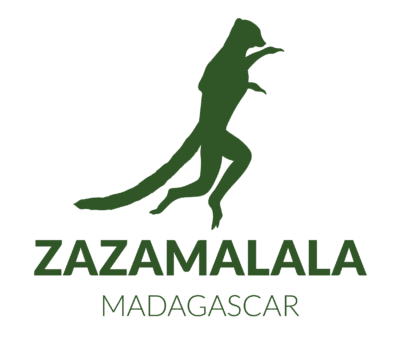
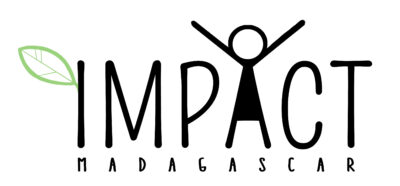
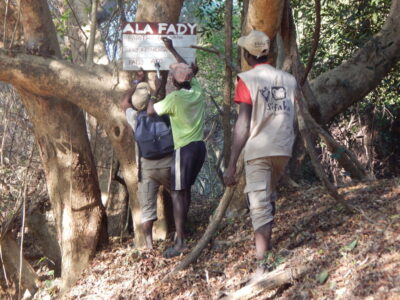 We focus our work on five project sites, in five different locations: Ankirihitra (region Boeny), Madiromirafy (region Betsiboka), Mahajeby (region Bongolava), Dabolava (region Menabe), and Vohitrarivo (region V7V). Each of these rural sites is unique in their biodiversity and communities, but across these locations, our projects hold similar objectives. These include reforestation and ecological restoration, lemur and habitat monitoring, environmental outreach and practical environmental education, community development, community health, and community conservation.
We focus our work on five project sites, in five different locations: Ankirihitra (region Boeny), Madiromirafy (region Betsiboka), Mahajeby (region Bongolava), Dabolava (region Menabe), and Vohitrarivo (region V7V). Each of these rural sites is unique in their biodiversity and communities, but across these locations, our projects hold similar objectives. These include reforestation and ecological restoration, lemur and habitat monitoring, environmental outreach and practical environmental education, community development, community health, and community conservation.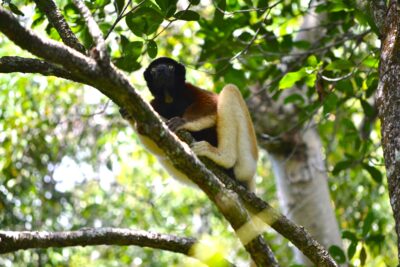
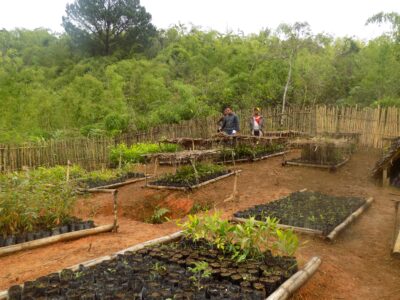 Community Development
Community Development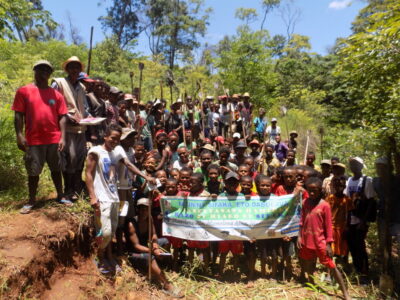
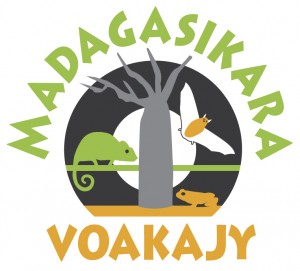
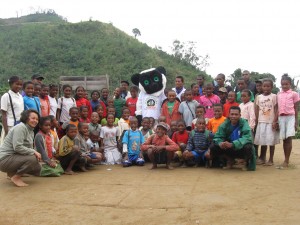
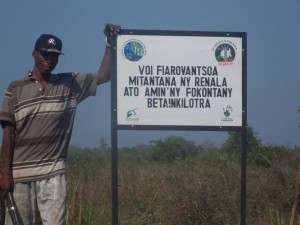

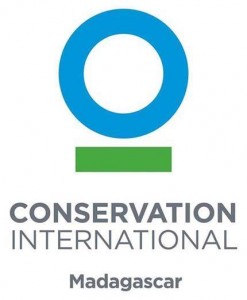
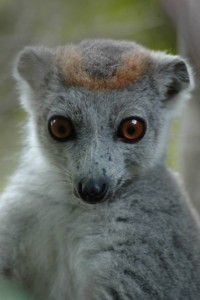
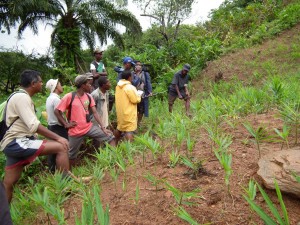

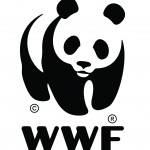



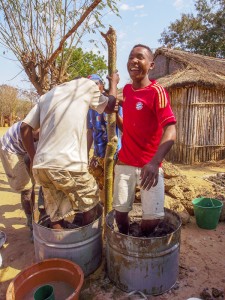 Chances for Nature spread, communicate, and promote sustainable natural resource use techniques as well as raise awareness for Madagascar’s extraordinary biodiversity. We achieve these goals through outreach, education and capacity building in small villages in rural Madagascar. Chances for Nature currently focuses many of its efforts in Central Menabe (west Madagascar), but does not limit its education initiatives to just this region.
Chances for Nature spread, communicate, and promote sustainable natural resource use techniques as well as raise awareness for Madagascar’s extraordinary biodiversity. We achieve these goals through outreach, education and capacity building in small villages in rural Madagascar. Chances for Nature currently focuses many of its efforts in Central Menabe (west Madagascar), but does not limit its education initiatives to just this region.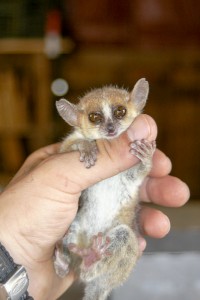 The area where we have focused many of our efforts, in west Madagascar, is home to the largest remaining dry deciduous forest of Western Madagascar. This unique ecosystem is home to high floral and faunal diversity, including the world’s smallest primate: Madame Berthe’s mouse lemur (Microcebus berthae).
The area where we have focused many of our efforts, in west Madagascar, is home to the largest remaining dry deciduous forest of Western Madagascar. This unique ecosystem is home to high floral and faunal diversity, including the world’s smallest primate: Madame Berthe’s mouse lemur (Microcebus berthae).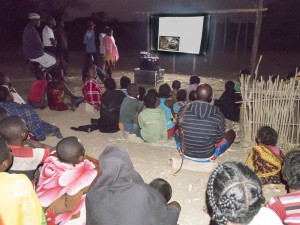 We use Malagasy-language multimedia presentations and films to promote sustainable use of natural resources. In 2013, we produced a film designed to illustrate the uniqueness of Madagascar’s biodiversity; the film also explained the consequences of unsustainable use of natural resources and presented three alternative sustainable techniques and behaviors that could be used to improve the lives of local people while reducing natural resource depletion. This film, as well as other multimedia presentations, reached Malagasy communities in 2013 and 2014 through the help of a mobile cinema. This mobile cinema works exclusively through pedal (bicycle) power and thus reaches a large amount of people – even in remote areas without electricity. The cinema was even used to raise awareness and supplement environmental education in several Malagasy schools.
We use Malagasy-language multimedia presentations and films to promote sustainable use of natural resources. In 2013, we produced a film designed to illustrate the uniqueness of Madagascar’s biodiversity; the film also explained the consequences of unsustainable use of natural resources and presented three alternative sustainable techniques and behaviors that could be used to improve the lives of local people while reducing natural resource depletion. This film, as well as other multimedia presentations, reached Malagasy communities in 2013 and 2014 through the help of a mobile cinema. This mobile cinema works exclusively through pedal (bicycle) power and thus reaches a large amount of people – even in remote areas without electricity. The cinema was even used to raise awareness and supplement environmental education in several Malagasy schools.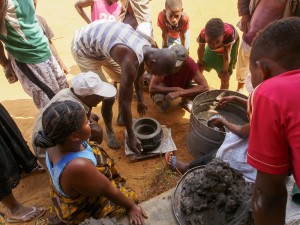 As 80% of the energy consumption in Madagascar is used for cooking, the use of environmentally-friendly stoves can have a positive impact on habitat protection. Our approach combines environmental education, the promotion of sustainable techniques and behaviors, and modern media which has turned out to be very successful and motivated two communities to build and use the stoves.
As 80% of the energy consumption in Madagascar is used for cooking, the use of environmentally-friendly stoves can have a positive impact on habitat protection. Our approach combines environmental education, the promotion of sustainable techniques and behaviors, and modern media which has turned out to be very successful and motivated two communities to build and use the stoves.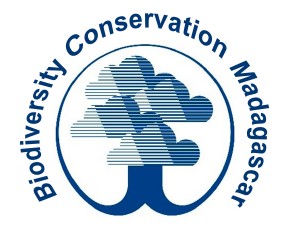
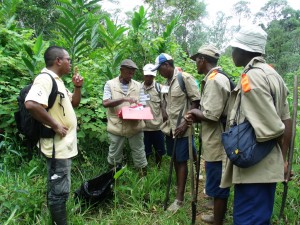 Biodiversity Conservation Madagascar (BCM) was established in 2002 as the conservation arm of Bioculture (Mauritius) Ltd. Our main goals are to conserve threatened forests in east and west Madagascar that are of high biodiversity value, especially those rich in lemur species. We currently work in the 2,400 hectare lowland rainforest in Sahafina (East Madagascar) and the Beanka dry deciduous forest in the Maintirano region (West Madagascar).
Biodiversity Conservation Madagascar (BCM) was established in 2002 as the conservation arm of Bioculture (Mauritius) Ltd. Our main goals are to conserve threatened forests in east and west Madagascar that are of high biodiversity value, especially those rich in lemur species. We currently work in the 2,400 hectare lowland rainforest in Sahafina (East Madagascar) and the Beanka dry deciduous forest in the Maintirano region (West Madagascar).